Transformations of neural representations in a social behaviour network
- PMID: 35922505
- PMCID: PMC9529293
- DOI: 10.1038/s41586-022-05057-6
Transformations of neural representations in a social behaviour network
Abstract
Mating and aggression are innate social behaviours that are controlled by subcortical circuits in the extended amygdala and hypothalamus1-4. The bed nucleus of the stria terminalis (BNSTpr) is a node that receives input encoding sex-specific olfactory cues from the medial amygdala5,6, and which in turn projects to hypothalamic nuclei that control mating7-9 (medial preoptic area (MPOA)) and aggression9-14 (ventromedial hypothalamus, ventrolateral subdivision (VMHvl)), respectively15. Previous studies have demonstrated that male aromatase-positive BNSTpr neurons are required for mounting and attack, and may identify conspecific sex according to their overall level of activity16. However, neural representations in BNSTpr, their function and their transformations in the hypothalamus have not been characterized. Here we performed calcium imaging17,18 of male BNSTprEsr1 neurons during social behaviours. We identify distinct populations of female- versus male-tuned neurons in BNSTpr, with the former outnumbering the latter by around two to one, similar to the medial amygdala and MPOA but opposite to VMHvl, in which male-tuned neurons predominate6,9,19. Chemogenetic silencing of BNSTprEsr1 neurons while imaging MPOAEsr1 or VMHvlEsr1 neurons in behaving animals showed, unexpectedly, that the male-dominant sex-tuning bias in VMHvl was inverted to female-dominant whereas a switch from sniff- to mount-selective neurons during mating was attenuated in MPOA. Our data also indicate that BNSTprEsr1 neurons are not essential for conspecific sex identification. Rather, they control the transition from appetitive to consummatory phases of male social behaviours by shaping sex- and behaviour-specific neural representations in the hypothalamus.
© 2022. The Author(s), under exclusive licence to Springer Nature Limited.
Conflict of interest statement
Competing interests
The authors declare no competing interests.
Figures
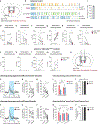
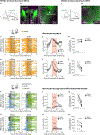
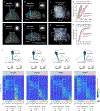
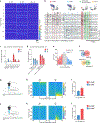
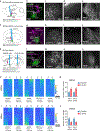
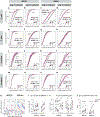
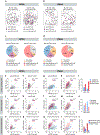


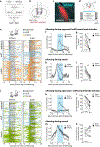

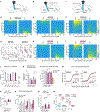
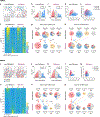

Comment in
-
Striatal shaping of hypothalamic control.Nat Rev Neurosci. 2022 Oct;23(10):581. doi: 10.1038/s41583-022-00633-1. Nat Rev Neurosci. 2022. PMID: 36050477 No abstract available.
Similar articles
-
Estrogen Receptor Alpha-Expressing Neurons in Bed Nucleus of the Stria Terminalis and Hypothalamus Encoding Aggression and Mating.eNeuro. 2024 Nov 26;11(11):ENEURO.0218-24.2024. doi: 10.1523/ENEURO.0218-24.2024. Print 2024 Nov. eNeuro. 2024. PMID: 39592221 Free PMC article. Review.
-
Distinct hypothalamic control of same- and opposite-sex mounting behaviour in mice.Nature. 2021 Jan;589(7841):258-263. doi: 10.1038/s41586-020-2995-0. Epub 2020 Dec 2. Nature. 2021. PMID: 33268894 Free PMC article.
-
Mating and agonistic behavior produce different patterns of Fos immunolabeling in the male Syrian hamster brain.Neuroscience. 1995 Jun;66(3):721-36. doi: 10.1016/0306-4522(94)00563-k. Neuroscience. 1995. PMID: 7644033
-
Posterior amygdala regulates sexual and aggressive behaviors in male mice.Nat Neurosci. 2020 Sep;23(9):1111-1124. doi: 10.1038/s41593-020-0675-x. Epub 2020 Jul 27. Nat Neurosci. 2020. PMID: 32719562 Free PMC article.
-
Molecular neuroanatomy of the mouse medial preoptic area with reference to parental behavior.Anat Sci Int. 2019 Jan;94(1):39-52. doi: 10.1007/s12565-018-0468-4. Epub 2018 Nov 3. Anat Sci Int. 2019. PMID: 30392107 Review.
Cited by
-
Lateral hypothalamic leptin receptor neurons drive hunger-gated food-seeking and consummatory behaviours in male mice.Nat Commun. 2023 Mar 17;14(1):1486. doi: 10.1038/s41467-023-37044-4. Nat Commun. 2023. PMID: 36932069 Free PMC article.
-
Interconnected neural circuits mediating social reward.Trends Neurosci. 2024 Dec;47(12):1041-1054. doi: 10.1016/j.tins.2024.10.004. Epub 2024 Nov 11. Trends Neurosci. 2024. PMID: 39532581 Review.
-
Independent inhibitory control mechanisms for aggressive motivation and action.Nat Neurosci. 2024 Apr;27(4):702-715. doi: 10.1038/s41593-023-01563-6. Epub 2024 Feb 12. Nat Neurosci. 2024. PMID: 38347201
-
Hypothalamus, Neuropeptides and Socioemotional Behavior.Brain Sci. 2023 Sep 11;13(9):1303. doi: 10.3390/brainsci13091303. Brain Sci. 2023. PMID: 37759904 Free PMC article.
-
Intrinsic Dynamics and Neural Implementation of a Hypothalamic Line Attractor Encoding an Internal Behavioral State.bioRxiv [Preprint]. 2024 May 22:2024.05.21.595051. doi: 10.1101/2024.05.21.595051. bioRxiv. 2024. PMID: 38826298 Free PMC article. Preprint.
References
-
- Anderson DJ Circuit modules linking internal states and social behaviour in flies and mice. Nat. Rev. Neurosci 17, 692–704 (2016). - PubMed
MeSH terms
Substances
Grants and funding
LinkOut - more resources
Full Text Sources
Research Materials
Miscellaneous

